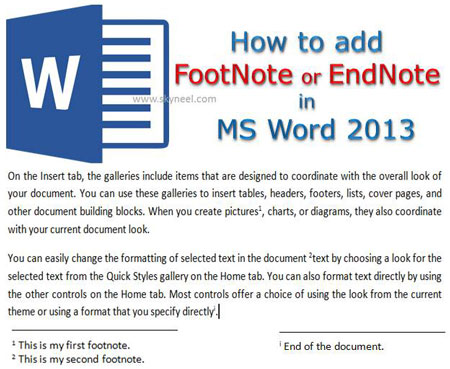
In Windows, EndNote creates a file with an *.enl extension, along with a *.data folder containing two MySQL files pdb.eni and sdb.eni. Anatomy, descriptive and applied (18th ed.). For example, listed below are some citations from Gray's Anatomy using several different styles:ġ910 Anatomy, descriptive and applied. If the user fills out the necessary fields, EndNote can automatically format the citation into any of over 2,000 different styles the user chooses.
#Format endnotes in word 2013 software
It is also possible to search library catalogs and free databases, such as PubMed, from within the EndNote software program itself. The user can then import the citations into the EndNote software. Some databases (e.g., PubMed) requires the user to select citations, select a specific format, and save them as. This enables the user to select multiple citations and saves the user from having to manually enter the citation information and the abstracts. Most bibliographic databases allow users to export references to their EndNote libraries. The program presents the user with a window containing a dropdown menu from which to select the type of reference they require (e.g., book, congressional legislation, film, newspaper article, etc.), and fields ranging from the general (author, title, year) to those specific to the kind of reference (abstract, author, ISBN, running time, etc.) There are several ways to add a reference to a library: manually, or by exporting, importing, copying from another EndNote library, or connecting from EndNote.

EndNote groups citations into "libraries" with the file extension *.enl and a corresponding *.data folder.


 0 kommentar(er)
0 kommentar(er)
